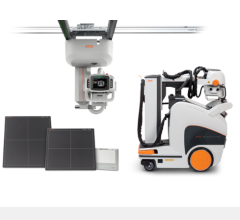
The discovery of 2-D X-rays more than 100 years ago marked a breakthrough of the most basic form of image-guided surgery tools, enabling surgeons to examine patients in order to perform the appropriate surgical procedure. Due to the fact that all patients’ anatomies are not uniform or identical to the medical text illustrations, the X-ray form of examination can be quite challenging.
Rapid progress began with the launch of computers and the development of ways to measure the location of an object precisely, such as through the utilization of a global positioning system (GPS). Medical scientists increasingly began to exploit imaging advances such as computed tomography (CT) and magnetic resonance imaging (MRI). This can be attributed to the advantageous ability to transfer the imaging data via an optical disk, CD-ROM or computer network to the operating room, where it is loaded into the workstation prior to the surgical procedure.
Another notable progress worthy of mention is that of frameless stereotaxy, which involved a stationary device’s assistance in the exact guidance of a surgical instrument. Since then, scientists, surgeons and other radiology experts have constantly strived to comprehend how image-guidance best aids surgeons for preoperative planning, navigating complex anatomy with ease, surgical precision, injury prevention and patient safety.
The underlying notion of image-guided surgery is to use diagnostic imaging modalities to provide the surgeon with the capacity to see transparently under the surface of the body. These transparent anatomical structures support safe and effective, minimally invasive surgery. The purveyors of this new technology note that image-guided surgery has overcome both the limitations of conventional surgery, namely, the visual limitations of the human eye and the barriers our body presents to surgeons trying to access hard-to-reach regions.
Image-guided robotics is the combination of image guidance technology and automated robotics to deliver precise automated therapy, such as to ablate tissues or implant devices including electrodes or orthopedic joints. Image-guided surgical navigation is presently allowing surgeons to inspect the infected tissue inside of cavities, narrow passageways, interior arteries and tumors positioned deep inside the brain. The total revenue for image-guided surgeries will reach an estimated $819.4 million in 2014, growing at a compound annual growth rate (CAGR) of 19.1 percent from 2007 to 2014.
In its entirety, the emergence of image-guided surgery now enables surgeons to visualize and navigate through the patient’s anatomy in real-time 3-D before, as well as during, surgery. This remarkable advancement is the result of a culmination of futuristic technologies encompassing computers, leading-edge software, specialized surgical instruments and precision position-measurement systems. The utilization of these advances has resulted in greater surgical precision and increased ability to apply minimally invasive surgical procedures. As a result, the patient outcome is superior.
Image-Guided Surgery and Medical Applications
Image-guided surgical systems have revolutionized conventional surgical techniques by providing a precise treatment guidance system that can help ensure the safety of vital structures, while maintaining the best outcome for patients. This section explores computer-aided detection in selective medical domains:
Neurosurgery
The term neurosurgery entails a wide range of procedures that are carried out within the cranium or spine. Neurosurgeons trust image-guided surgical technologies for performing neurological applications such as craniotomy, shunt replacement, brachytherapy, biopsy and so on. By and large, these systems have gained the surgeon’s credibility, because by using them, any changes in the brain position during surgery can be easily tracked, in addition to the surgeon getting a well-defined view of the surgical field.
Reconstructive Orthopedic Surgery
Image-guided surgical systems are helping patients in surgeries like total knee replacement, total hip replacement and percutaneous spine injury, all of which fall under the orthopedic solutions category. Orthopedic image-guided surgeries, including trauma and emergency interventions as well as ligament reconstruction, are well accepted by surgeons because they aid in properly aligning the implant where an error could lead to serious complications, such as leg length discrepancy. Image-guided surgical systems and surgical navigation assist the orthopedic surgeons in preplanning the surgery and choosing the optimum implants, depending on the patient’s anatomy along with performance of soft tissue balancing.
Minimally Invasive Revascularization Surgery
The increasing awareness of image-guided surgeries has led to the expansion and creation of cutting-edge tools and techniques applicable across optimizing beating-heart revascularization. Consistent and reproducible outcomes in patients undergoing beating-heart coronary artery bypass grafting can be achieved by using novel image-guided surgical technologies throughout the procedure.
Key Trends in Image-Guided Surgical Tools Utilization
The image-guided surgical systems, as well as surgical robots, are aiding surgeons to perform procedures with extraordinary precision and adroitness. The major advantage of using these systems is that it helps surgeons handle the most complicated surgeries with superior precision tools. The rate of acceptance of these systems is quite encouraging and in the near future, it is expected that they will ultimately dictate the way most of the surgeries are performed.
A number of developments are occurring within the image-guided surgical market, all of which increase the accuracy of the procedure performed and reduce complications to a great level. Applications such as tumor resection, which were performed earlier using open surgical methods, have now been simplified by the use of surgical positioning systems. A recent development noticeable is the endoscopic positioning systems which employ optical, electromechanical and magnetic tracking to perform the same surgery with an incision not more than a few millimeters, in addition to enhanced results and patient satisfaction benefits. Innovations are focused on integrating computer-assisted surgery and imaging technologies to present the best advantages of both the technologies on a single platform.
Computer-assisted endoscopy is a novel trend useful in various surgical disciplines. In this development, rigid endoscopes are used in combination with adapted image-guided stereotactic frames. The surgical procedure performed using these endoscopes can help minimize uncertainty when navigating through miniature anatomical regions. Research is currently underway in evaluating the use of magnetic resonance imaging (MRI) to provide real-time navigation and surgical planning. These navigation systems help the surgeons guide and ascertain the positioning of his tools within the patient's anatomy. The development of low-cost, high-performance computers along with advancements in imaging modalities has enabled the widespread acceptance of frameless image-guided stereotactic systems inside the operating room.
Analyst Insights and Strategic Recommendations for Fostering Growth
Firms pioneering the development of image-guided surgery devices should be conducting more clinical trials to evaluate their devices in a broad range of applications because the utilization of image-guided surgical systems in valuable applications will justify their investment on these systems aptly. Clinical investigations should be carried out to establish the efficacy and unique benefits of these novel systems.
Finally, as the lack of sufficient training in the use of image-guided surgical systems is a major challenge, more surgeons should be encouraged to become proficient in using these systems. This can be achieved through interactive training modules offered to the healthcare providers by device manufacturers.
Frost & Sullivan enables clients to accelerate growth and achieve best-in-class positions in growth, innovation and leadership. Its Growth Partnership Service provides the CEO and the CEO’s Growth Team with disciplined research and best-practice models to drive the generation, evaluation and implementation of powerful growth strategies. Frost & Sullivan leverages 50 years of experience in partnering with Global 1,000 companies, emerging businesses and the investment community from offices on six continents. For more information: www.frost.com


 January 13, 2026
January 13, 2026 









